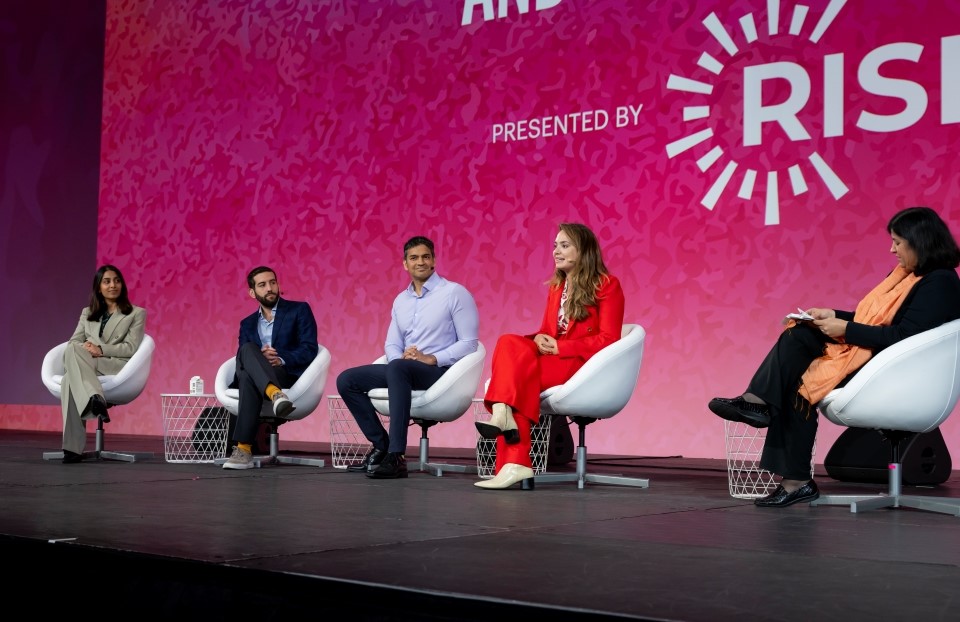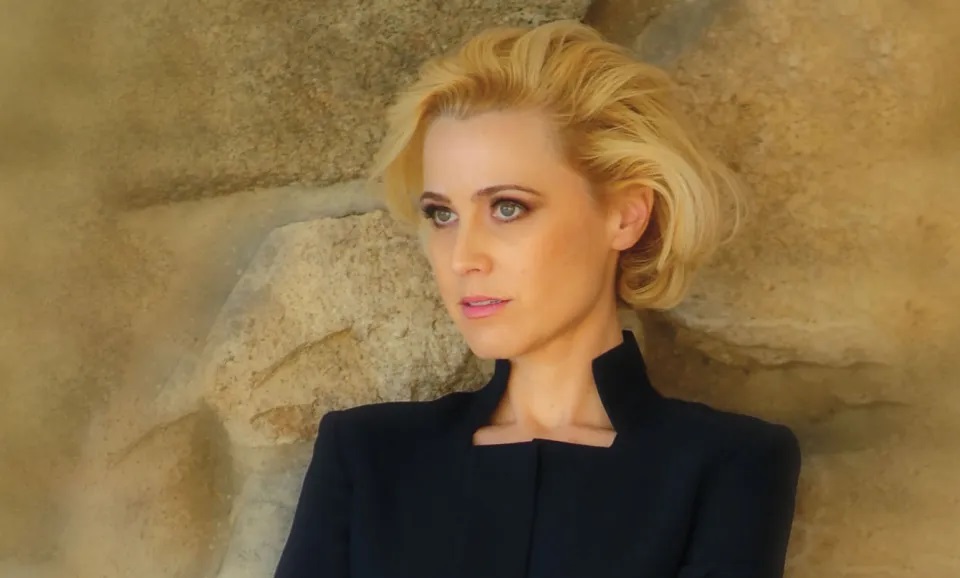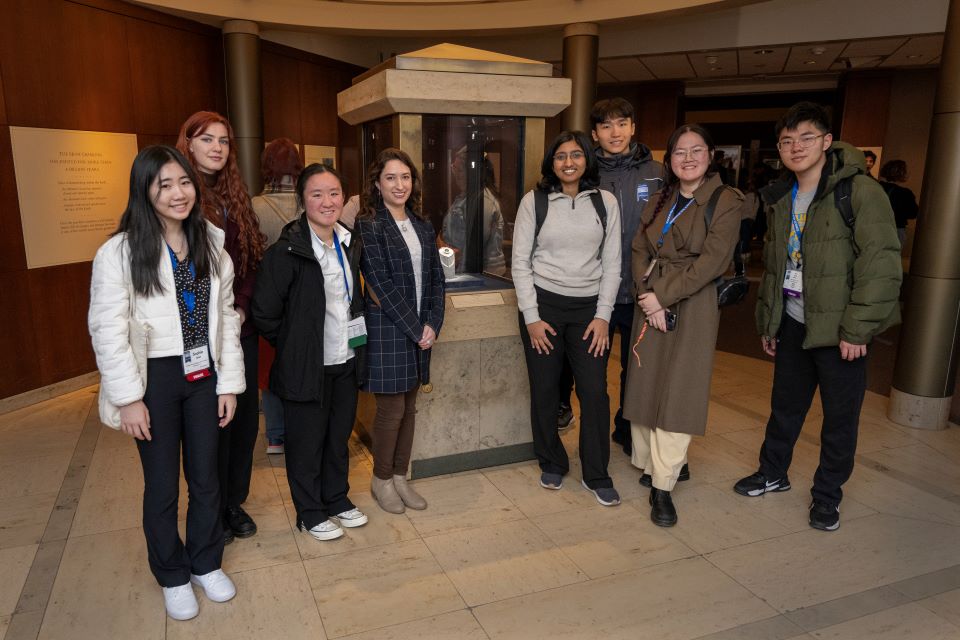Alumni, ISEF, Science Talent Search
Society alum wants to hook people on discovery
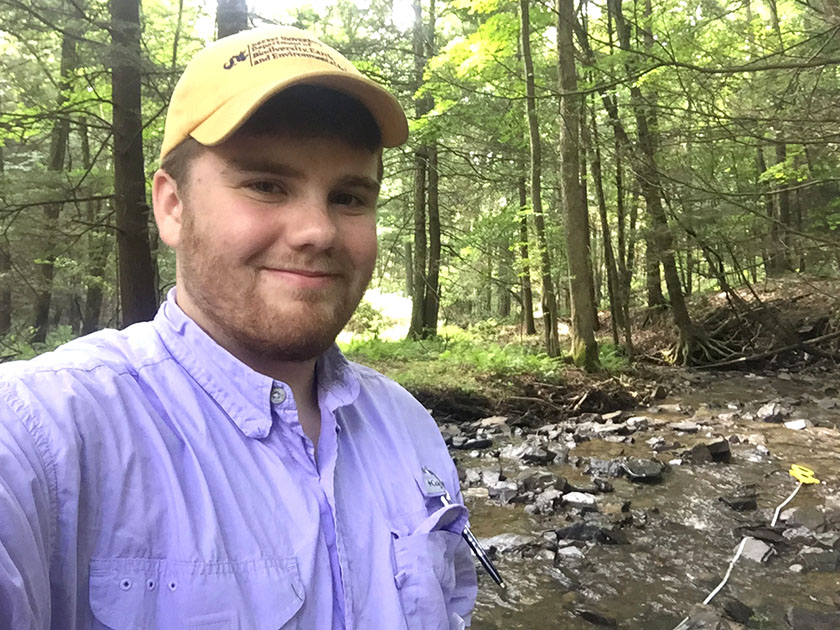
Science communication is very important to Vincent O’Leary, a multi-year Intel ISEF finalist and 2013 Intel STS finalist. Vincent, in his third year out of five at Drexel University, studies geoscience and environmental science with a minor in mathematics.
He wrote a new science course for Drexel students, is a founding member of two science student organizations, and spent the summer mapping species diversity in Jamaica and taking water chemistry samples. The Society for Science & the Public asked Vincent to share his experiences at Drexel and this summer.

You did field work in central Pennsylvania this summer. Tell us about it.
This summer I worked at the Academy of Natural Sciences as part of a six month internship through Drexel. My program allows students to work in a co-op six months each year instead of taking classes. Part of my job was geographic information system (GIS mapping) analysis and I worked on large spatial datasets to model species diversity in Jamaica. The idea was to model the effects of urban development and climate on species biodiversity and then make recommendations for future sustainable development and conservation.
For the other project, I monitored watershed responses to Marcellus Shale drilling in Pennsylvania. This was part of a several-year study to quantify the impacts, if any, the drilling may have on surface water quality. This work got me out into the field every day for several weeks, with long hours and hard work. My typical week during that time was to leave at 7 a.m. every day, drive for an hour or so, take various samples of water chemistry, invertebrates, and algae, and then return to the hotel for dinner. I traveled all around the state and got to speak to residents about our work and open them up to discovery in their own backyard. It’s too early to say what our results are, but there are some publications coming soon on this work.
ISEF and STS made me interested in science, but especially in communicating and promoting science. It was one of the first times I had ‘done science’ outside of a classroom and then I got to meet with people around the world who shared my passion.
Do you have other STEM-related projects or goals that you’re pursuing?
I am still working part-time at the Academy of Natural Sciences on several different projects. Since I’ve started at Drexel, I have worked for Dr. Ted Daeschler in the vertebrate paleontology lab. In the lab, I work on databases for the collections and maintaining the specimens themselves. We’re currently working on a side project on the development of ancient fish skin, and for this I get to work on a scanning electron microscope, which is always fun.
Dr. Daeschler and I also collaborated to write a new course at Drexel last year, and 18 students signed up to take my class. We talked about science communication and how to use the walking trail on the Schuylkill River as a medium for science education. Students worked in teams to redesign the trail as a space for learning about and experiencing nature and the unique history of the area. I am currently drafting a proposal for this project to get funding and to work with the community on the ideas we discussed.
My goals for STEM right now are to improve the experience of Drexel for other students and to increase science communication with my peers and the community. I am a founding member of both the environmental science and geoscience student organizations, and am working to get more students involved in education and the field through these groups. Before I graduate I want to bring all these experiences together, from the river to the lecture hall, and found a nonprofit to support other students passionate about engaging the world with their research. I’ve always felt strongly about communication and transparency in science, and Drexel has given me a space to develop these passions into meaningful experiences.
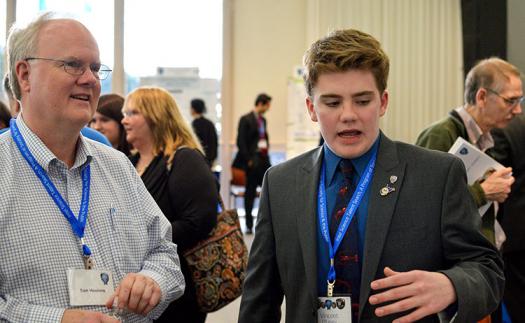
What was your most memorable experience at Intel STS or ISEF?
The first year I placed at Intel ISEF was not something I ever expected to happen. I always thought I was lucky to be there and have fun for a week, and competing wasn’t something I really thought about. When my name was called for Animal Sciences, I figured it was someone else, and when I finally made it onto the stage, I couldn’t stop laughing. It changed me and drove me to continue my work throughout high school and even today.
My other memory was from STS, and it was actually before STS even started. I applied for STS as a longshot, hoping I would be recognized as a semifinalist and could end my high school career on a high note. I was still shocked when I was recognized as a semifinalist and figured that was the end. The night before the finalists were announced, I was at a swim meet. After my first event I noticed a missed call from Washington, D.C., but didn’t even want to think it was the Society. I figured it was a spam call and tried not to get excited. Then Society called back and I had to run outside, in the middle of January, in just my bathing suit, so I could hear what they were saying. Both of these stick out because I had been recognized in a way I never thought possible. It encourages me to always say yes and never to count myself out without first trying my best.
Can you provide a short description of your Intel STS or ISEF research project(s)?
Right before freshman year, a local professor who had been involved in the local science fair reached out to me after hearing about my 8th grade project. I was reluctant at first to continue research in high school — it just wasn’t something people did — but he got me started working on crayfish in my basement, which turned into a four-year project on different aspects of crayfish. I observed invasive species of crayfish. Once introduced, they can be bad for the environment. Only recently people have begun to realize the negative aspects of invasive crayfish. I observed competitions between crayfish for shelter and resources in order to understand how one group might become more dominant, and ultimately how we might be able to stop it.
Has your involvement in Intel STS or ISEF influenced you to pursue STEM or promote STEM to others?
Yeah! ISEF and STS made me interested in science, but especially in communicating and promoting science. It was one of the first times I had “done science” outside of a classroom and then I got to meet with people around the world who shared my passion. I was addicted, and now I always think about how to get more people hooked on discovery. That is the reason I wrote a course offered at Drexel, why I helped found the student organizations for my major(s), and why I was the President of Drexel Smart House ( a student-led research organization for sustainable cities). I want to build meaningful opportunities for students and the public to learn and discuss science, and also become involved in my work and interests.
Aside from having support, the most important thing I’ve learned from being a part of ISEF/STS is that the classroom should not be the end of your learning.
What is your advice to young people interested in science and math?
Find a good teacher. I have only been able to experience these opportunities because other people in my life were helping me succeed. Luckily, today that teacher can come from anywhere or be anyone! Whether it’s your actual teachers, someone you work with outside of school, your employer, or even communities online — we all need support and encouragement to excel in our field. Today it is easier than ever to meet new teachers and learn from experts around the world online.
Aside from having support, the most important thing I’ve learned from being a part of ISEF/STS is that the classroom should not be the end of your learning. Whether you go home and read, debate with peers, do research, work online, whatever, you cannot allow yourself to stop learning once school is over. Learning should happen every second of every day and the only thing you need to do to be a scientist or mathematician is to keep asking why, and occasionally writing down the answer so you can get published and get other people to ask why.
